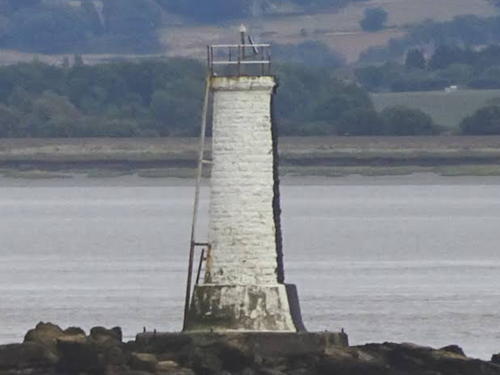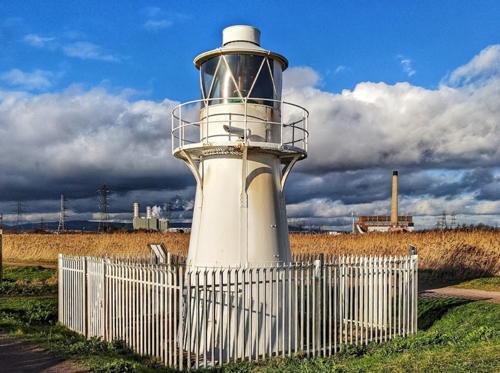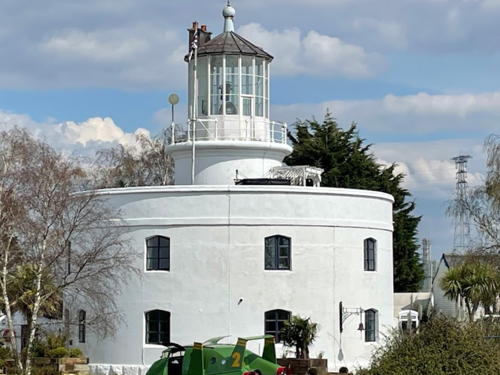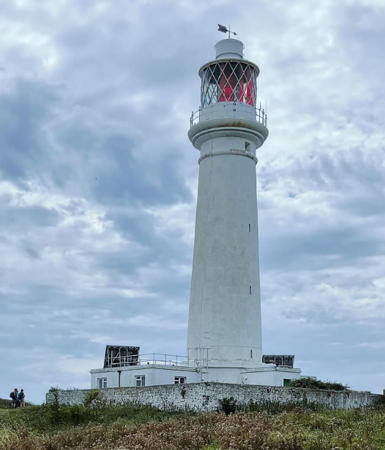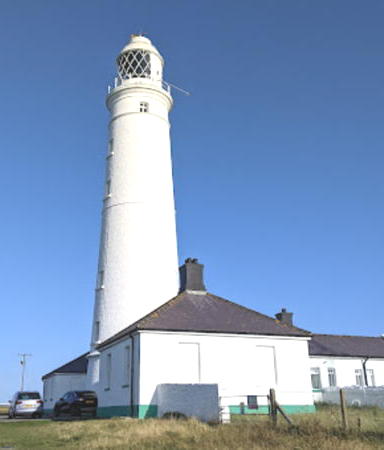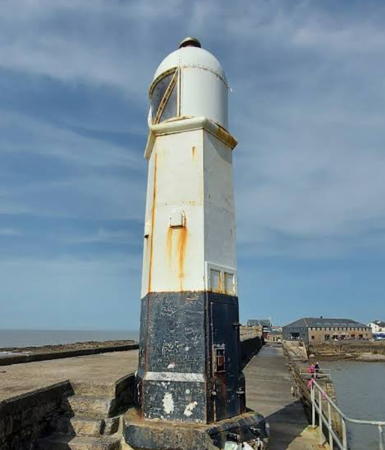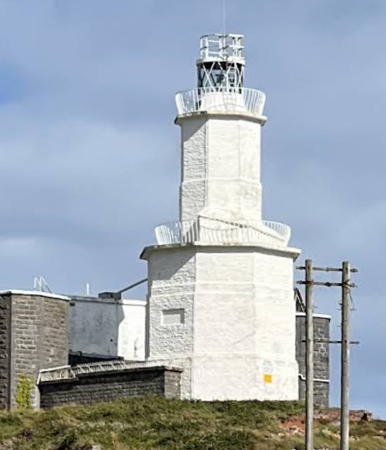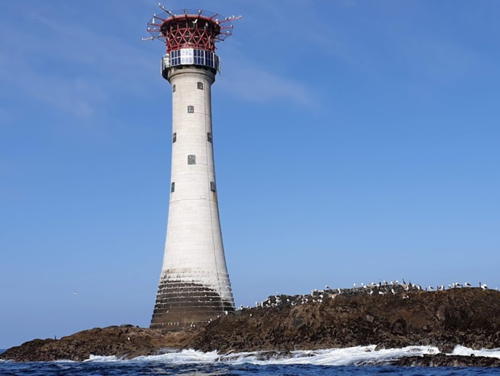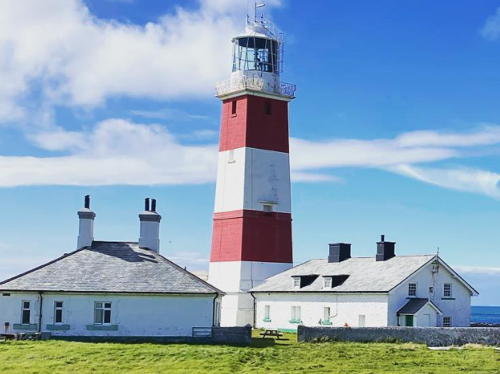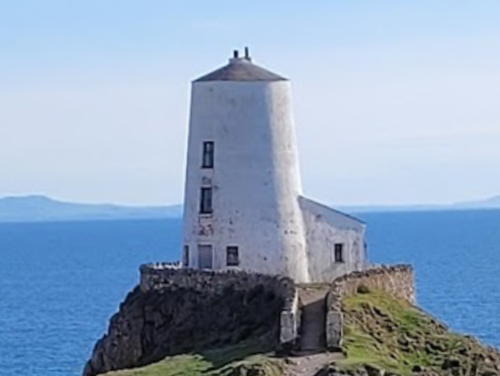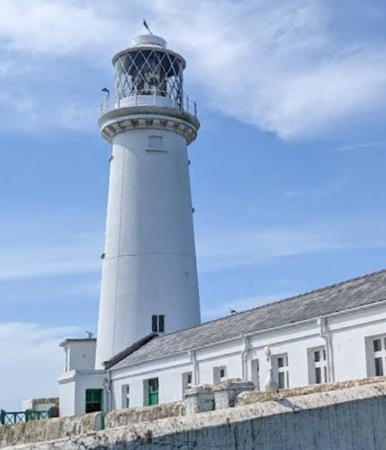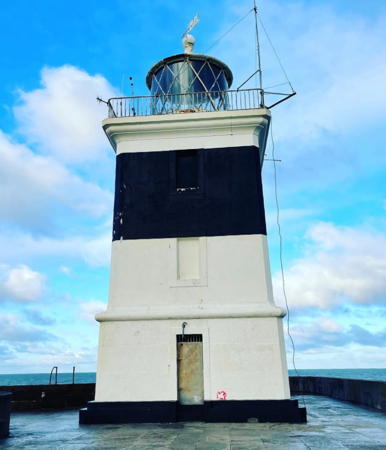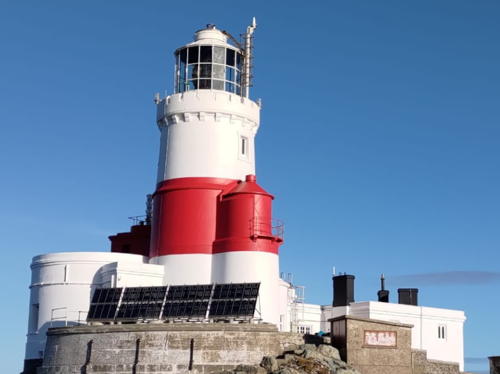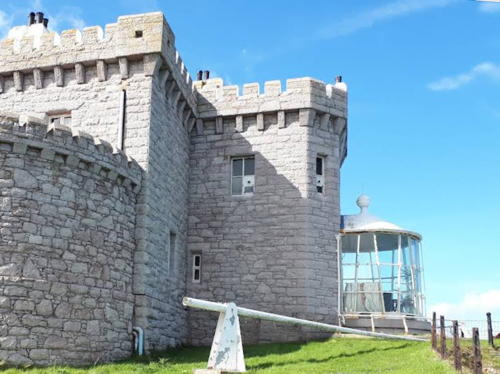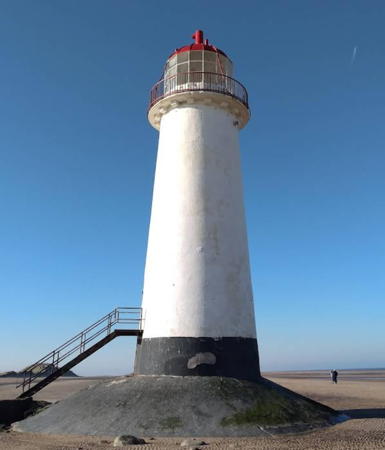The United Kingdom (officially the United Kingdom of Great Britain and Northern Ireland) includes England, Scotland, Wales, and Northern Ireland. Wales (Cymru in Welsh) occupies a mountainous peninsula to the west of England, surrounded by water on three sides, the Bristol Channel to the south, the Celtic Sea to the southwest and the Irish Sea to the west and north. A country with a distinct Celtic heritage and language, Wales was conquered by England in the 13th century and formally annexed to England in the 16th century. Since 1301 the title Prince of Wales has been held traditionally by the heir to the English and later British throne.
Most of the coastline of Wales is rugged, scenic, and hazardous to navigation. The lighthouses of the country are clustered in the north, guarding the approaches to the Mersey estuary and the port of Liverpool, and in the south, guarding the approaches to the Severn. estuary and the ports of Cardiff and Bristol. The largest number of lighthouses can be found at the northwestern corner on the Isle of Anglesey and at the southwestern corner in Pembrokeshire.
Historically divided into 13 counties, Wales is now divided into 22 council areas, known as principal areas, some styled as counties and some as county boroughs. Sir is the Welsh word for county, corresponding to the English shire.
The Welsh language Cymraeg is spoken commonly in many parts of Wales, especially the north and west. The Welsh word for a lighthouse is goleudy; ynys is an island, trywn is a cape, pen is a headland, culfor is a strait, aber is an estuary, afon is a river, and porthladd is a port.
The major coastal lighthouses are maintained by Trinity House, the English lighthouse administration. Several, including South Stack, St. Ann's Head, and Nash Point, are among the best known and most visited British lighthouses. Harbor lights are under the control of local port authorities.
ARLHS numbers are from the ARLHS World List of Lights. Admiralty numbers are from Volume A of the Admiralty List of Lights & Fog Signals. U.S. NGA numbers are from Publication 114.
- General Sources
Trinity House - Chartered by Henry VIII in 1514, Trinity House has built and operated lighthouses in Britain for nearly 500 years.
- Lighthouses of South Wales and North Wales
- Photos and information from the Lighthouse Accomodations website.
- Online List of Lights - Wales - Bristol Channel, Celtic Sea, and Irish Sea
- Photos by various photographers posted by Alexander Trabas.
- Lighthouses in Wales
- Photos by various photographers available from Wikimedia.
- World of Lighthouses - Wales
- Photos by various photographers available from Lightphotos.net.
- United Kingdom Lighthouses
- Aerial photos posted by Marinas.com.
- Association of Lighthouse Keepers
- Founded by serving and retired keepers, this lighthouse association is open to everyone.
- Britische Leuchttürme auf historischen Postkarten
- Historic postcard images posted by Klaus Huelse.
- GPSNauticalCharts
- Navigational chart for Wales.

Trwyn Du (Penmon Point) Light, Penmon, June 2023
Google Maps photo by David Cumbley
